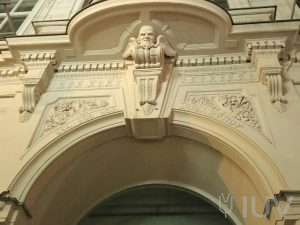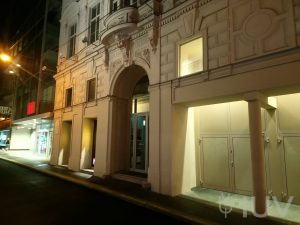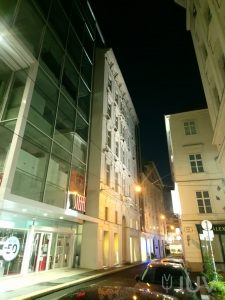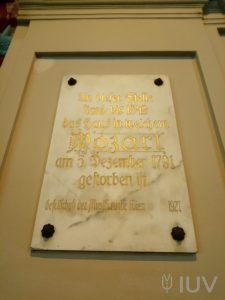Franz Xaver Wolfgang Mozart (1791, Vienna, Austria – 1844, Karlovy Vary, Czech Republic) was a pianist, conductor, composer and younger son of Wolfgang Amadeus Mozart.
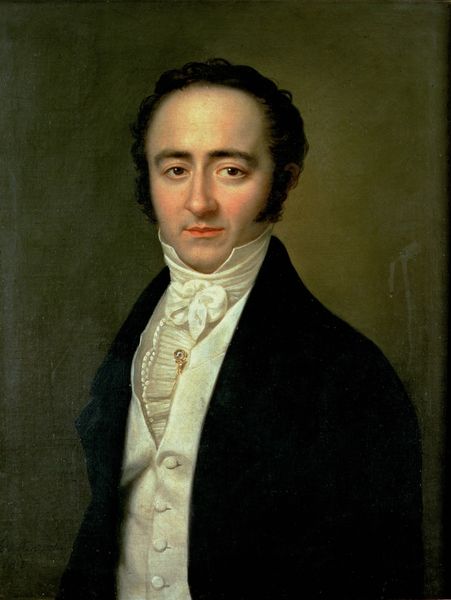
Portrait of Franz Xaver © Karl Gottlieb Schweikart
Franz Xaver’s father died when he was not even a year old, so then all the hopes for the second great Amadeus Mozart rested on him. Franz Xaver received a high-quality education. He wrote his first piano concerto at the age of fourteen (1805). Antonio Salieri and Jan-Neponum Hummel were the teachers of Mozart the Younger. Considerable hopes for Franz Xaver were made by his mother, who from childhood decided that he should reach the level of his father, or even surpass him. When the boy turned 17, he went to Lviv (most likely escaped), where he lived, created and taught for 30 years!
Franz Xaver in Lviv
He initially taught music to Count Bavorowski’s two daughters in the town of Pidkarmin near Rohatyn. He also taught music to the children of von Janishevsky (imperial chambelian – secretary of the Austrian Emperor Franz II) in Burshtyn.
In Lviv, Franz Xaver was very famous and considered a very talented teacher. His student Julia von Cavalcabo (or Julie Weber von Webenau) became the first Austrian female pianist and composer. Back there Franz Xaver strongly supported her musical ambitions, even though this field was dominated by men. The publishing house “Breitkopf&Härtl” printed her work, which was then praised by the Leipzin Music Newspaper. By the way, Julia was the daughter of Baroness Josephine, who was the beloved muse of Franz Xaver.
In 1826, in Lviv, in the Greek Catholic Cathedral of St. George, the composer performed his father’s famous piece “Requiem” together with the musical choir of St. Cecilia, which was founded by Franz Xaver himself. The choir consisted of more than 400 amateurs of choral singing. Outstanding Polish violinist Karl Lipiński was also a part of this performance. This choir served as a basis of the later founded Lemberg Musical Society of St. Cecilia and the Institute of Singing, which in fact, became the first music school in the city. And the society itself was the core of the future Lviv Philharmonic.

St. Cecilia, the work of Josef Engert, court artist of Prince Ferdinand Friedrich of Anhalt-Köten-Plessis in Silesia (с) Mozartiana Galicia
In Lviv, Franz Xaver was a well-known man and ordered letters to be sent directly to him to Lemberg (Lviv), because “everyone knows where Mozart Jr. lives”.
In his musical style, Franz Xaver relies on a classical basis, but adapts the forms of musical works to the needs of the new time. Features of early romanticism in exquisite virtuoso texture are especially noticeable. Most of Franz Xaver’s compositions were created in Galicia. He wrote his pieces mainly as a dedication to some patron, or to a certain event. Researchers find his chamber-instrumental works or opuses particularly interesting – piano miniatures, cycles of variations, the Second Piano Concerto Es-dur op. 25, as well as choral cantatas op. 28.
Franz Xsaver in Vienna
The Mozart dynasty begins with Franz Xaver’s grandfather, Leopold Mozart. The violin that belonged to him (the second half of the 18th century) can be found in the 13th hall in the collection of the Art and History Museum in Vienna.
Throughout life, the Mozart family moved a lot around Vienna. At different times, they lived in a dozen different houses. On September 29, 1790, the family moved to their last apartment, Zu Michaeli (Rauhensteingasse 8, 1010, Wien). This is the apartment where Amadeus Mozart lived until his death. It is called the Mozart-Sterbehaus, as reported by a memorial plaque. In the cartographic record of the city, this house is also known as “kleines Kaiserhaus”. The origin of this name is unknown, perhaps it is because of the family by the name of Kaiser, who lived there before Mozart’s family. On July 26, 1791, this apartment became the birthplace of their sixth child (fourth son) Franz Xaver Wolfgang.
The baptism of Mozart-son took place in the main cathedral of Vienna – Stephnansdom (Stephansplatz, 1010, Vienna). This is evidenced by the entry in the matrix book, which is digitalized online.
In 1805, at the age of 14, Franz Xaver performed his First cantata. Thanks to his mother Constance Mozart, the public premiere took place at the Viennese Theater An-der-Wien (Linke Wienzeile 6, 1060, Wien). Then critics were quite flattered about his youthful work.
Here is how the International Festival of Classical Music Music Lviv MozartArt quotes this premiere: “Let the well-deserved applause, which was awarded to the young Mozart, be a double encouragement for the future artists to imitate the great father! May he never forget that the name Mozart now favors him, but will subsequently make tough and set high demands for him; that, finally, the path of cannot be taken without great and hard effort”. The first cantata of Franz Xaver was included in the program of the fifth Lviv MozArt festival in August 2021. On the FB page of the festival you can listen to its recording, it is the first one in the program. The international festival is held every year in Lviv and Franz Xaver is its patron and ideological inspirer. Interestingly, listening to this work means getting a truly unique experience, because for more that 200 years the First cantata was considered lost, until it was found in the Berlin State Library.
Franz Xaver’s stay in Vienna on April 22, 1820 was very productive. Here, in only one day, he created the middle part of the concerto (Andante espressivo). By that time, while still a little-known composer, he managed to secure the consent of Empress Caroline Augusta for the dedication of his cantata “The First Day of Spring”. For him, this meant recognition of the quality of the work at the state level, which Franz Xaver recorded in his notes in every way. How he succeeded, still remains a mystery for modern researchers.
On May 2, 1820, for the first time, the concert was performed in full (in three parts) and it was the middle part, written in April in one day, that caused a special sensation. According to Mazartiana Galicia researchers, this performance was attended by teachers of Franz Xaver – Johannes Nepomuk Gummel and Andreas Streicher. They were both proud of their student. A few days later, Hummel himself (he was a student of Wolfgang Amadeus Mozart and a friend of Ludwig van beethoven) gave concerts. And on 15th of May was marked by the good news that Empress Caroline Augusta had agreed to the dedication.
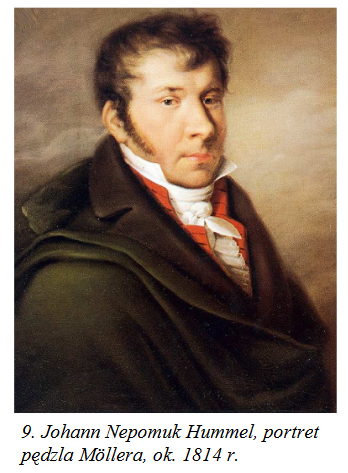
(с) Mozartiana Galicia
Researchers of Franz Xaver Mozart’s work claim that he left with the Baroni-Cavalcabo family for permanent residence in Vienna sometime in August-September 1838. On the way, he stopped in Przemyśl (Poland), where he took part in a charitable program in May 1838. This concert is considered to be the last that is associated with the Galician lands.
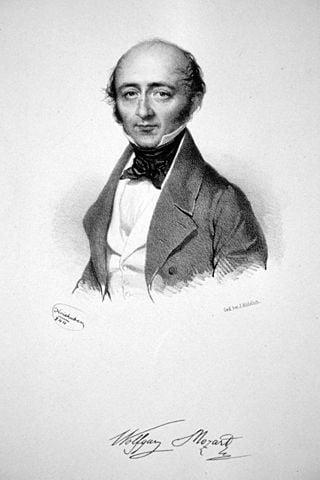
Portrait of Franz Xaver Mozart, painted in the last year of his life (1844) by Josef Kriguber (с) Mozartiana Galicia
Franz Xaver spent his last years of his life in Vienna. Here he taught the Austrian pianist Ernst Pauer, who had become famous in London since 1851. Frany Xaver suffered from stomach cancer, just like his grandfather Leopold Mozart. The composer died of this disease on July 29, 1844 in Karlovy Vary during one of the visits to the resort, where he was buried.

(с) Mozartiana Galicia
Books/documentary:
- Богдан Коломійчук. Моцарт із Лемберга: Вид-во Видавництво Старого Лева, 2018.
- Упорядниця Оксана Линів. Моцарт-син. Життя Франца Ксавера у подорожньому щоденнику і листах: Вид-во Видавництво Старого Лева, 2021.
- Дорж Бату. Моцарт 2.0: Вид-во Видавництво Старого Лева, 2020.
- Walter Hummel. W.A.Mozarts Söhne: Bärenreiter-Verlag Kassel und Basel, 1956.
References:
- За матеріалами Mozartiana Galicia (Галицька Моцартіана) — ініціатива фестивалю Lviv MozArt, що передбачає пошук, оцифрування і наукове дослідження документальних свідчень, пов’язаних з перебуванням, творчістю і діяльністю молодшого сина славетного віденського класика Вольфганга Амадеуса Моцарта, Франца Ксавера Моцарта у Галичині.
- Любов Кияновська. Франц Ксавер Вольфганг Моцарт і Львів, ji.lviv.ua.
- Мар”яна Левицька. Таємнича муза львівського Моцарта: візуальна реконструкція приватної біографії, Україна Модерна, 6.08.2017.
- Violin — Sammlung alter Musikinstrumente 1043, Saal 13, Kunsthistorisches Museum Sammlung — khm.at/de/object/14a99a86a5/.
- Mozart-Wohnungen — Wien Geschichte Wiki.
- Спільнота Старого Лева. Моя книга — спроба повернути Моцарта Львову, Видавництво Старого Лева starylev.com.ua, 19.07.2018.
- Олеся Яремчук. Моцарт зі Львова: Оксана Линів готує для “Човна” видання унікальних щоденників сина Вольфганга Амадея, Човен choven.org, 05.07.20218.

